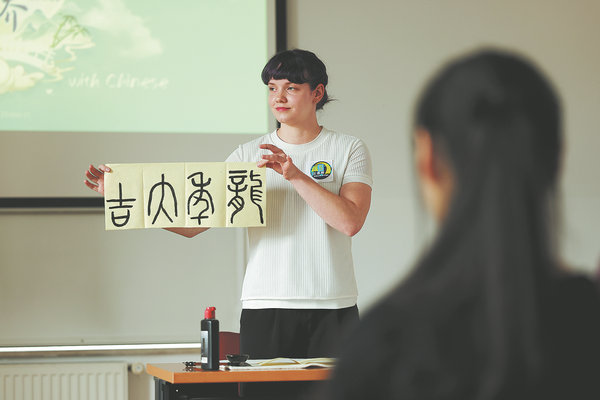

"We include various aspects of Chinese culture in our courses, such as traditions like the Spring Festival, martial arts, and Peking Opera. We also introduce new cultural knowledge relevant to daily life," Tan explains.
Tan, who has experience teaching Chinese in classrooms, believes online education allows more people to learn, and with the help of AI, online courses can provide more personalized and targeted practice for each student.
"The gamification of online learning makes it fun and easy for Chinese learners to study. Features like leaderboards and streaks help users build a habit of learning every day," Tan says.
"I understand that many learners also attend live classes, but they use our app for additional practice and to study by themselves since teachers aren't always available to answer questions," she adds.
Maxime Chaussignand, a French expatriate in Singapore, is teaching himself for the Chinese Proficiency Test, and uses Duolingo to keep his skills sharp. He hopes that when he next visits his wife's hometown of Chongqing, he'll be able to communicate smoothly with her relatives in Chinese.
Chaussignand's journey with Chinese began at university, and in 2015, he moved to Shanghai for work. Three years ago, he and his wife relocated to Singapore.
For now, he doesn't find listening and speaking too hard, but reading and writing are still tough. It's hard to read Chinese characters if they're not on a computer or in a book, he says, explaining that he writes characters the way they look on computers.
"For me, writing is the toughest part because many of the characters are like drawings," he explains. To learn, he writes each character out 50 times, practicing twice a week.
"I am trying to learn Chinese to specialize in finance, to be able to read financial news in Chinese," he says.